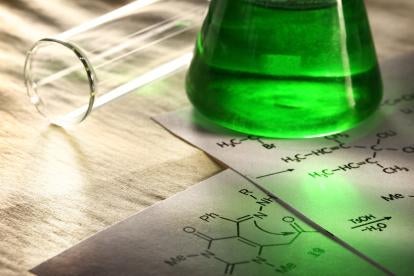The USPTO Patent Trial and Appeal Board (PTAB) has issued a final written decision upholding Shire’s Lialda® patent over the Inter Partes Review (IPR) challenge brought by Kyle Bass and his Coalition for Affordable Drugs. The decision underscores that obviousness is not established simply because each feature of a claim is found somewhere in the prior art where there is inadequate evidence of a motivation to arrive at the claimed invention as a whole.
The Lialda Patent At Issue
The patent at issue was Shire’s U.S. Patent 6,773,720, which is the only Orange Book-listed patent for Lialda®, which is approved for treating Crohn’s disease and ulcerative colitis. The patent relates to a pH-independent controlled release formulation of mesalazine (also known as 5-amino-salicylic acid or 5-ASA). Independent claim 1 recites:
1. Controlled-release oral pharmaceutical compositions containing as an active ingredient 5-amino-salicylic acid, comprising:
a) an inner lipophilic matrix consisting of substances selected from the group consisting of unsaturated and/or hydrogenated fatty acid, salts, esters or amides thereof, fatty acid mono-, di- or triglycerids, waxes, ceramides, and cholesterol derivatives with melting points below 90°C, and wherein the active ingredient is dispersed both in said the lipophilic matrix and in the hydrophilic matrix;
b) an outer hydrophilic matrix wherein the lipophilic matrix is dispersed, and said outer hydrophilic matrix consists of compounds selected from the group consisting of polymers or copolymers of acrylic or methacrylic acid, alkylvinyl polymers, hydroxyalkyl celluloses, carboxyalkyl celluloses, polysaccharides, dextrins, pectins, starches and derivatives, alginic acid, and natural or synthetic gums;
c) optionally other excipients; wherein the active ingredient is present in an amount of 80 to 95% by weight of the total composition, and
wherein the active ingredient is dispersed both in the lipophilic matrix and in the hydrophilic matrix.
The PTAB Decision
The PTAB decision was rendered in Coalition for Affordable Drugs II LLC v. Cosmo Technologies, IPR2015-00988, and is the first final written decision issued in an IPR proceeding brought by Kyle Bass and the Coalition for Affordable Drugs (CFAD). Controversial petitioners aside, the decision also deserves attention because it underscores an important hurdle to establishing obviousness before the PTAB—proving a motivation to combine the asserting teachings of the cited prior art references.
Obviousness Of Pharmaceutical Formulation Patents
Formulation claims like those at issue in this case are generally thought to be susceptible to an obviousness attack because many of the basic principles of formulating pharmaceutical products (e.g., how to achieve controlled release) and the components used are known in the art. Thus, patentability often is based on a lack of motivation to combine known components in the manner recited in the claims, lack of a reasonable expectation of success in achieving a product with the desired properties, and/or unexpected results achieved by the claimed formulation. The PTAB’s analysis in this case shows that the motivation prong can play a key role in an IPR proceeding.
CFAD relied on two references for its obviousness challenge:
-
Groenendaal was cited as the primary reference, and disclosed “controlled-release oral compositions comprising biologically active substances,” including 5-ASA.
-
Leslie was cited as a secondary reference that disclosed components used in the claimed formulation.
CFAD argued that one of skill in the art would have been motivated to improve the formulations of Groenendaal by combining them with elements taught in Leslie.
The patentee countered CFAD’s arguments by arguing that this was not a case of selecting “known options” from a “finite number of identified, predictable solutions.” In this regard, the patentee argued that CFAD’s cited art gave little indication as to which components were critical and which of the many possible choices were likely to be successful. Rather, according to the patentee, the cited art supplied numerous options that could be formulated into numerous types of controlled release dosage forms, but did not provide any motivation or reveal a reason why a person of ordinary skill in the art would have been motivated to “improve” the Groenendaal’s 5-ASA compositions.
Ultimately, the PTAB agreed with the patentee. The PTAB was unconvinced by CFAD’s assertions that manufacturing costs or concerns over “pH-dependent and time-dependent drug delivery approaches” would have been sufficient to motivate a person of ordinary skill in the art to combine the various aspects of the prior art as required to arrive at the claimed formulation. The PTAB also found that CFAD had failed to explain why one would have sought to improve Groenendaal’s 5-ASA formulations in the specific manner claimed in the ’720 patent when there were many other options for achieving pH-independent controlled release.
This holding underscores that even if individual claim elements are taught in the prior art, a petitioner must explicitly and compelling establish a motivation to combine. As the PTAB reminded the parties in this case:
To the extent that it is a close call, it is noteworthy that the burden of persuasion is on the Petitioner.
More Decisions On Motivation
The Federal Circuit recently affirmed a similar PTAB decision in Apotex, Inc. v. Wyeth, LLC, 2015-1871 (Fed. Cir. August 16, 2016) (appeal of IPR2014-00115). The patent at issue in Apotex was directed to a formulation of tigecycline, a known tetracycline antibiotic, that prevents degradation of the drug.
In the IPR, Apotex cited prior art that disclosed a nearly identical formulation of mincocyline (another tetracycline antibiotic) and prior art that discussed minocycline and tetracycline degradation pathways. Nevertheless, the PTAB upheld the validity of the challenged claims, because Apotex had failed to show why a person of ordinary skill in the art would have been motivated to substitute tigecycline for minocycline in the prior art formulations.
In affirming the PTAB decision, the Federal Circuit found that even though tigecycline and minocycline are both tetracycline antibiotics and tigecycline could, theoretically, be substituted into the prior art formulation, “there is not necessarily a motivation to substitute one antibiotic for a structurally related one…and there is nothing in the record here to show that the substitution would solve any other problem.”
These decisions underscore the importance of the motivation prong of an obviousness case, especially in front of the PTAB where the APJ’s are more likely than a district court jury to scrutinize technical arguments. Establishing what a person of ordinary skill in the art could have done is not sufficient. To establish obviousness a petitioner must show what such a person would have done. A patent owner defending against obviousness may be able to prevail by showing that a a person of ordinary skill in the art would have been faced with many options, with no particular reason to make the selections required to arrive at the claimed subject matter, and/or no reasonable expectation that making those selections would be advantageous.





 i
i

